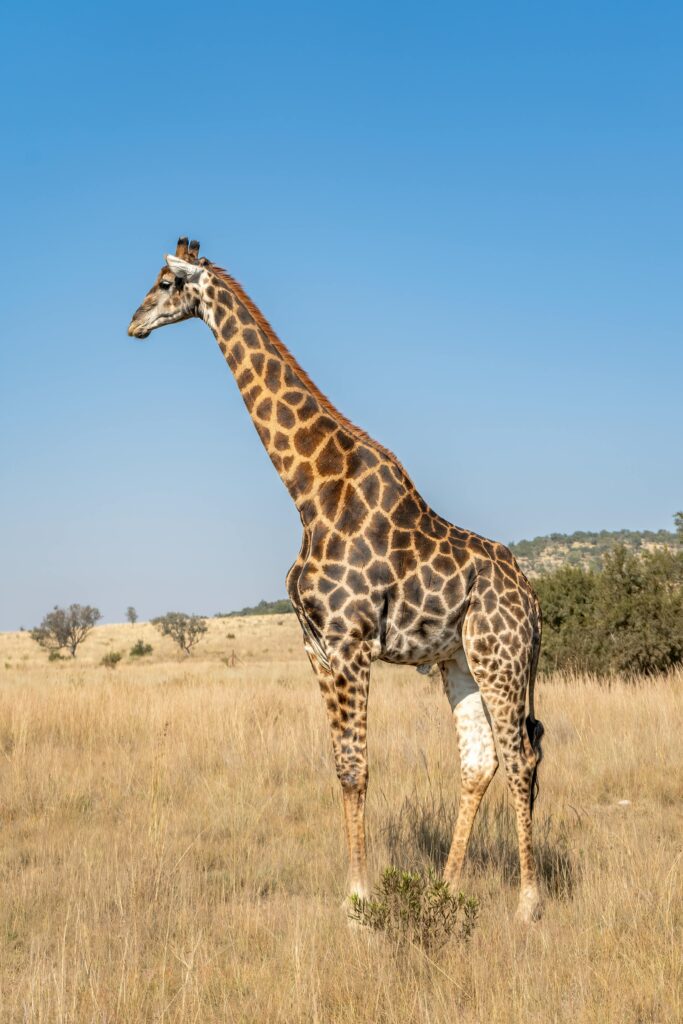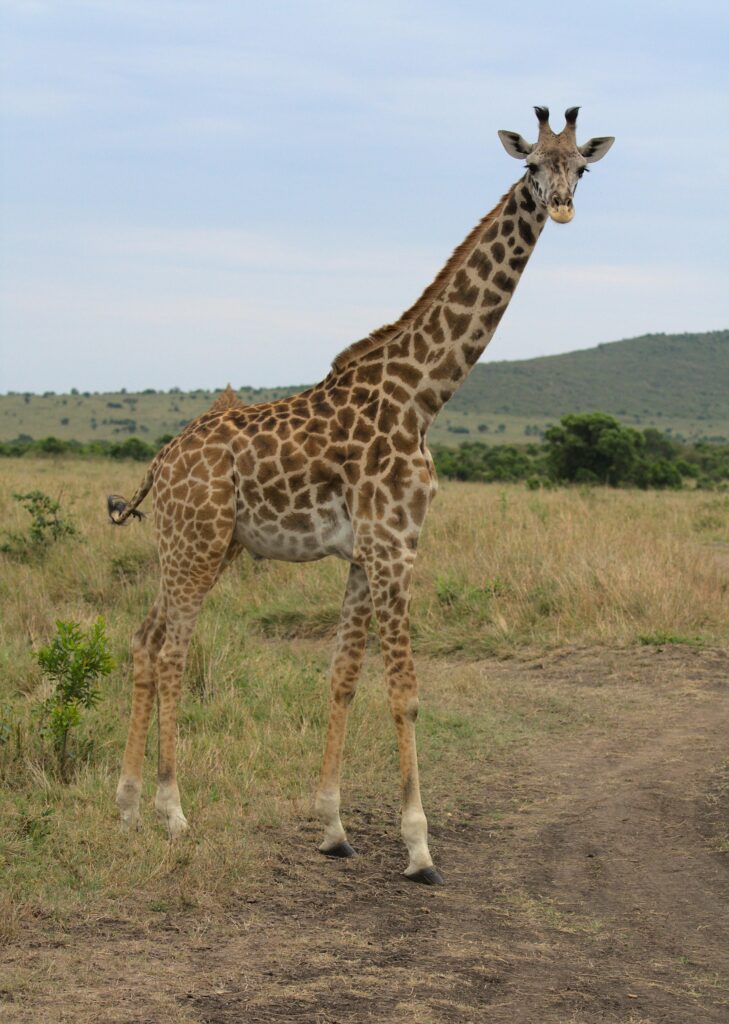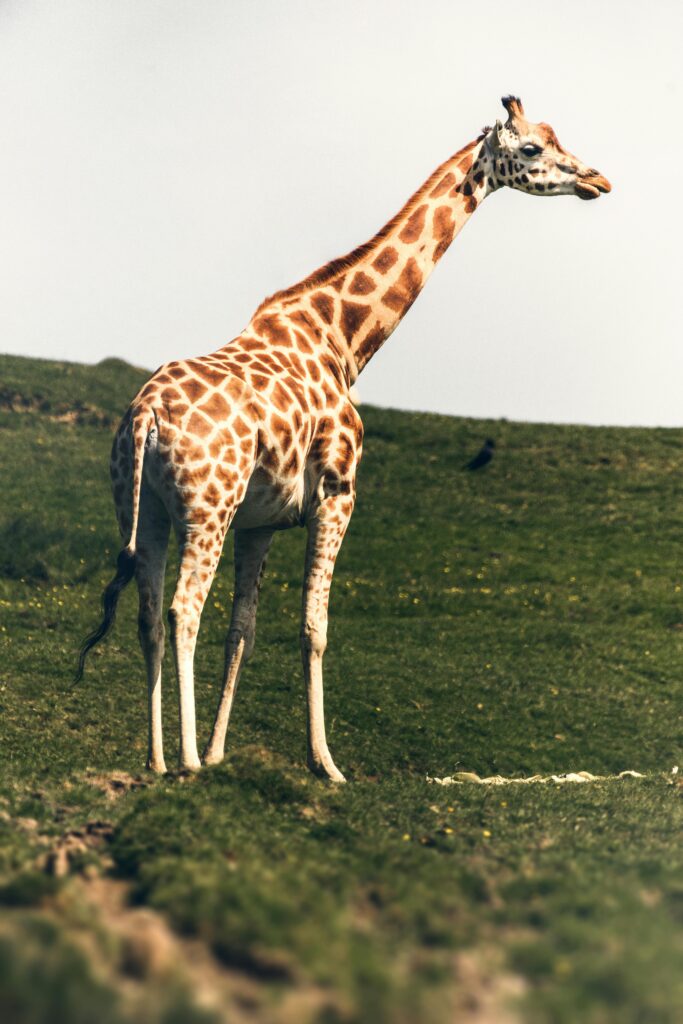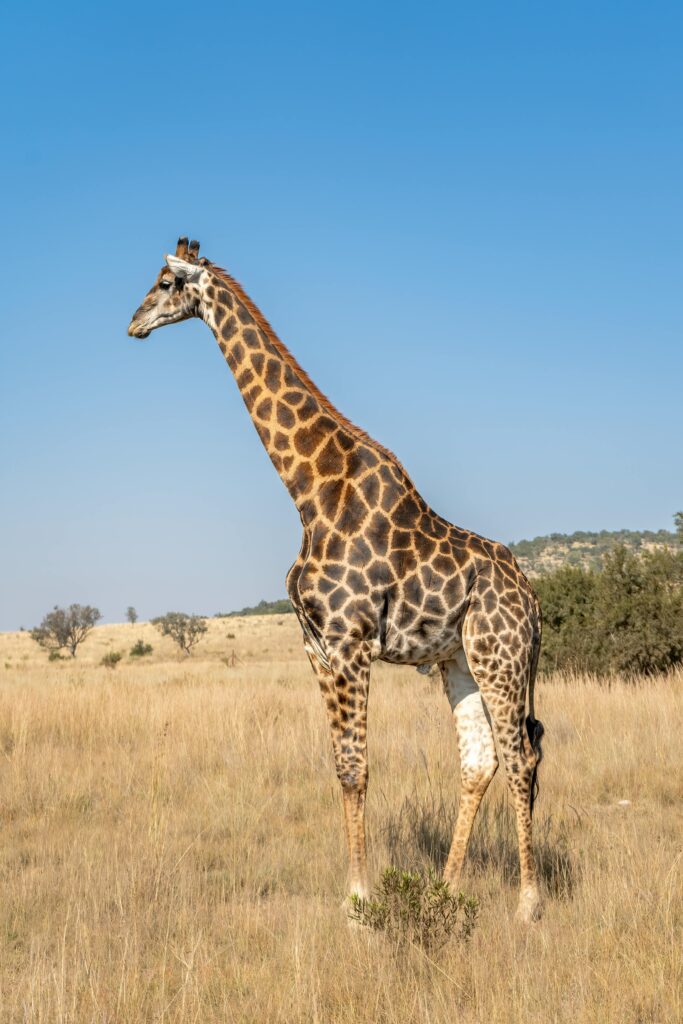Giraffes, with their towering necks and unique spotted patterns, stand as one of the most iconic and beloved animals in the African savannas. They are not only the tallest mammals on Earth but also have several distinctive adaptations that enable them to thrive in the wild. This article delves into the fascinating life of giraffes, covering everything from their physical traits and habitats to their behaviors, diet, and conservation status.
Giraffe Facts and Overview
- Scientific Name: Giraffa camelopardalis
- Average Height: Adult males can reach up to 18 feet, while females average around 14 feet.
- Weight: Male giraffes can weigh up to 3,000 pounds, while females weigh about 1,500 pounds.
- Lifespan: Giraffes typically live around 25 years in the wild, though they can live longer in captivity.
The giraffe’s most striking feature is its neck, which, despite its length, contains only seven vertebrae – the same number found in nearly all mammals, including humans. Each vertebra in a giraffe’s neck is elongated, allowing them to reach treetops for food. This evolutionary adaptation is a prime example of nature’s creativity in response to environmental demands.
Giraffe Habitat: Where Do Giraffes Live?

Giraffes are native to the savannas, grasslands, and open woodlands of Africa. Their range historically covered much of the continent, but today, due to human encroachment, habitat loss, and other pressures, giraffes are primarily found in regions south of the Sahara Desert, especially in countries like Kenya, Tanzania, Botswana, and South Africa.
They prefer environments with scattered trees and shrubs, particularly acacia trees, which serve as their primary food source. Open landscapes with tall vegetation allow giraffes to spot predators from afar, giving them an advantage for survival.
Giraffe Diet: What Do Giraffes Eat?

Giraffes are herbivores, with their diet mainly consisting of leaves, fruits, and flowers from woody plants. The acacia tree is their favorite source of food, and they have adapted to eating its thorny branches. Giraffes use their 18-inch-long, prehensile tongues to strip leaves from branches with remarkable precision.
A full-grown giraffe can eat up to 75 pounds of leaves daily. Their unique digestive system, which includes four stomach chambers, helps them efficiently break down tough plant matter and extract maximum nutrients. This diet is rich in water, so giraffes rarely need to drink. However, when they do, they must spread their legs wide to reach the ground, a position that makes them vulnerable to predators.
Giraffe Subspecies and Evolutionary Traits
There are several recognized giraffe subspecies, each with distinct coat patterns. Some of the commonly known subspecies include:
- Masai Giraffe (Giraffa camelopardalis tippelskirchi): Found primarily in Kenya and Tanzania, they have irregular, jagged spots.

2. Reticulated Giraffe (Giraffa camelopardalis reticulata): Characterized by a web-like pattern, they inhabit areas in northeastern Kenya, Somalia, and Ethiopia.

3. Northern Giraffe (Giraffa camelopardalis camelopardalis): Found in parts of central Africa, they have smaller, leaf-like spots.

These variations in patterns may have evolved as camouflage, helping giraffes blend into their respective habitats. Scientists believe giraffes diverged from their closest relatives, okapis, around 11 million years ago. Over time, natural selection likely favored giraffes with longer necks, enabling them to access food unavailable to other herbivores.
Giraffe Behavior and Social Structure
Giraffes are generally social animals, often forming loose groups known as towers. Unlike many social mammals, giraffe groups do not have a strict hierarchy and can be very fluid, with individuals joining or leaving as they please. These groups provide safety in numbers, as they can better spot predators like lions, hyenas, and leopards.
Giraffes communicate in various ways, including visual signals, body postures, and subtle vocalizations. Although largely silent, they occasionally produce sounds like hisses, grunts, and moos, especially during social interactions or distress.
The Importance of Giraffe Conservation
Giraffe populations have been steadily declining, and some subspecies are considered endangered. The primary threats to giraffes include habitat loss due to agricultural expansion, illegal hunting, and human-wildlife conflict. In some regions, giraffes are poached for their hides, tails, and meat.
Conservation efforts are underway to protect these gentle giants. Organizations such as the Giraffe Conservation Foundation work tirelessly to promote awareness, conduct research, and implement measures to ensure the survival of giraffe populations. Conserving giraffes is crucial, as they play a significant ecological role by maintaining healthy vegetation and supporting biodiversity in African ecosystems.
Interesting Giraffe Facts
- Unique Blood Circulation: Due to their height, giraffes have a unique circulatory system with a powerful heart that pumps blood all the way to their brain. They also have specialized blood vessels that prevent blood from pooling when they lower their heads.
- Sleep Patterns: Giraffes are known to sleep less than most animals, usually only 20-30 minutes per day in short naps. This adaptation minimizes their vulnerability to predators.
- Birth Process: Female giraffes give birth standing up, resulting in a drop of about six feet for the newborn! This seemingly rough entrance into the world actually helps stimulate the newborn to breathe and stand up quickly.
Conclusion: Celebrating Giraffes in the Wild
Giraffes are remarkable animals that embody the beauty and adaptability of nature. From their towering necks to their unique spots and intricate social lives, giraffes offer a glimpse into the diversity and wonder of the animal kingdom. As humans continue to expand into natural habitats, protecting giraffes and their environments is vital to preserving the delicate balance of Africa’s ecosystems.
Understanding the challenges giraffes face and the critical role they play in the wild can inspire collective action to secure their future. Through education, conservation, and responsible eco-tourism, we can all contribute to safeguarding these gentle giants for generations to come.


